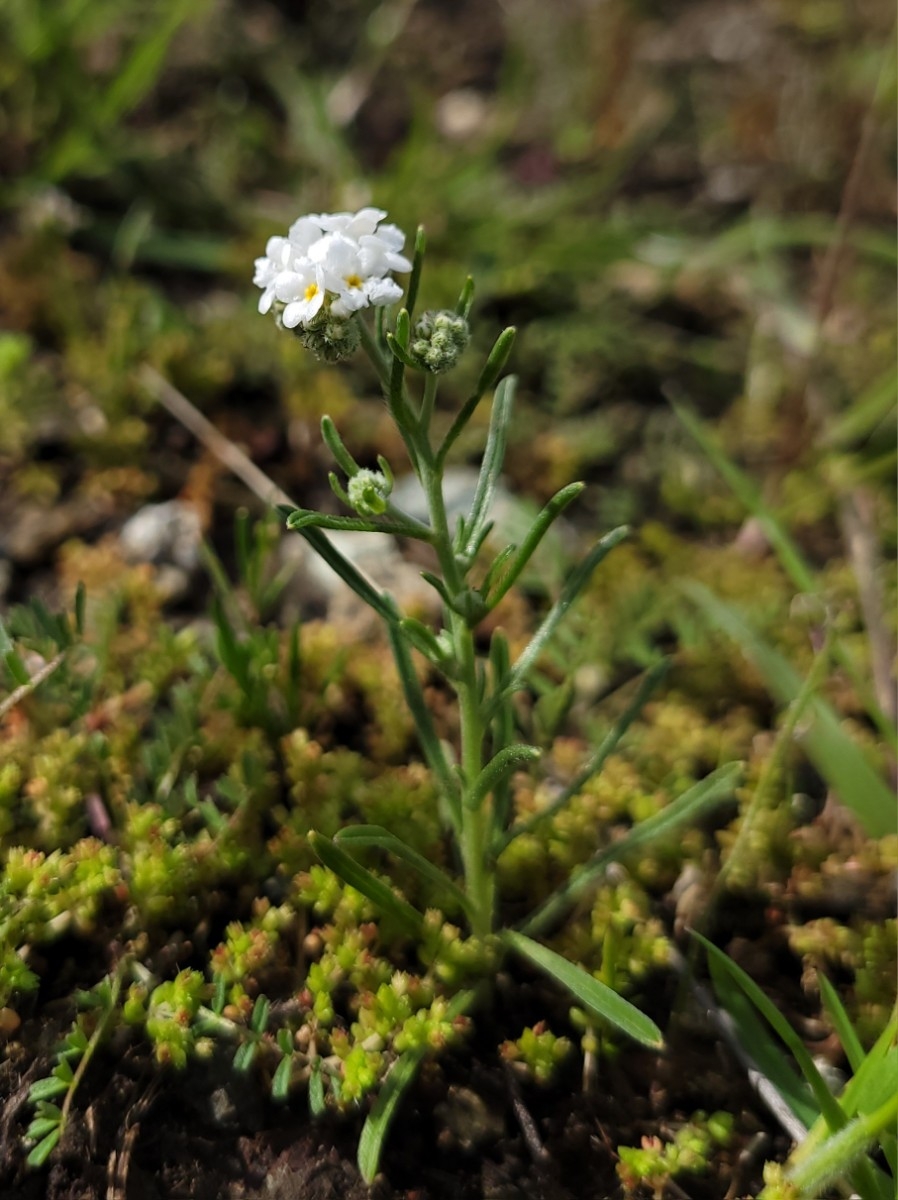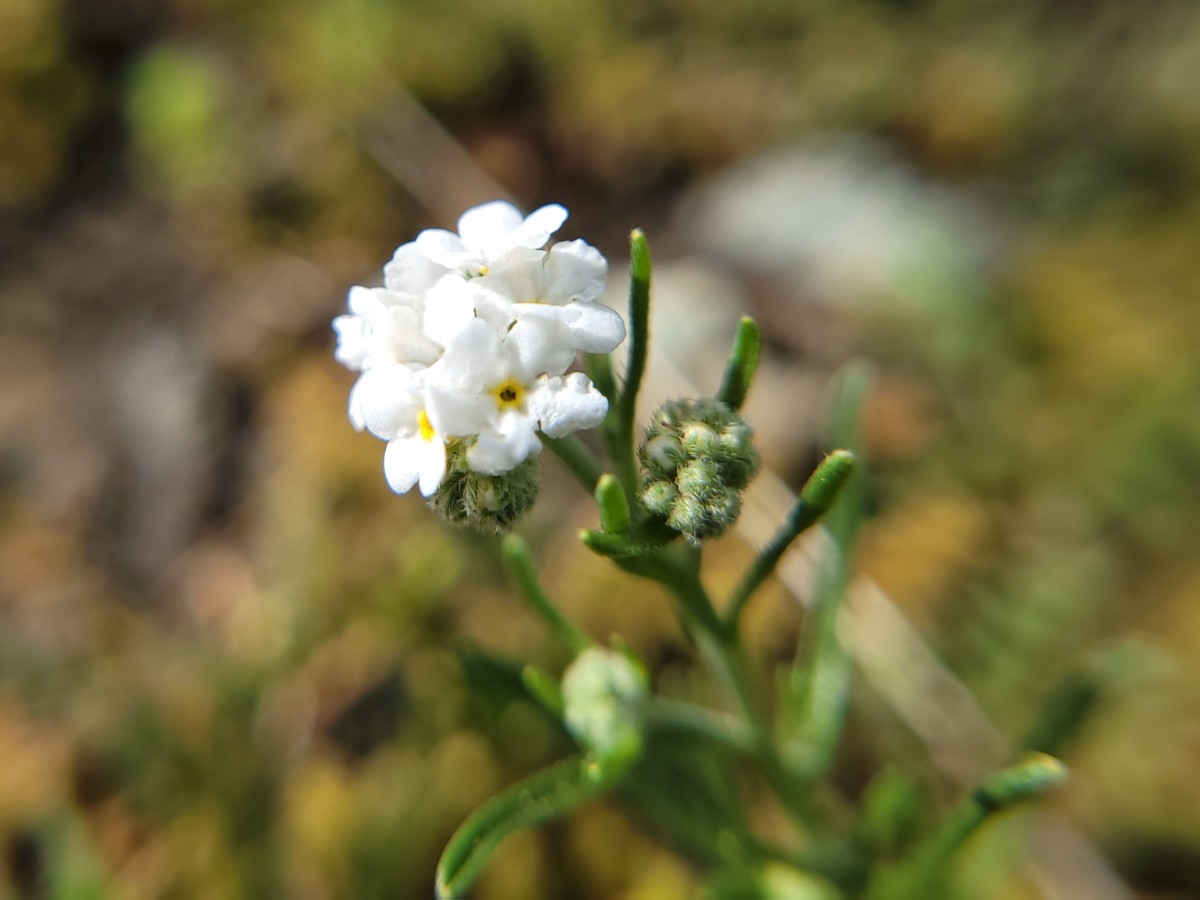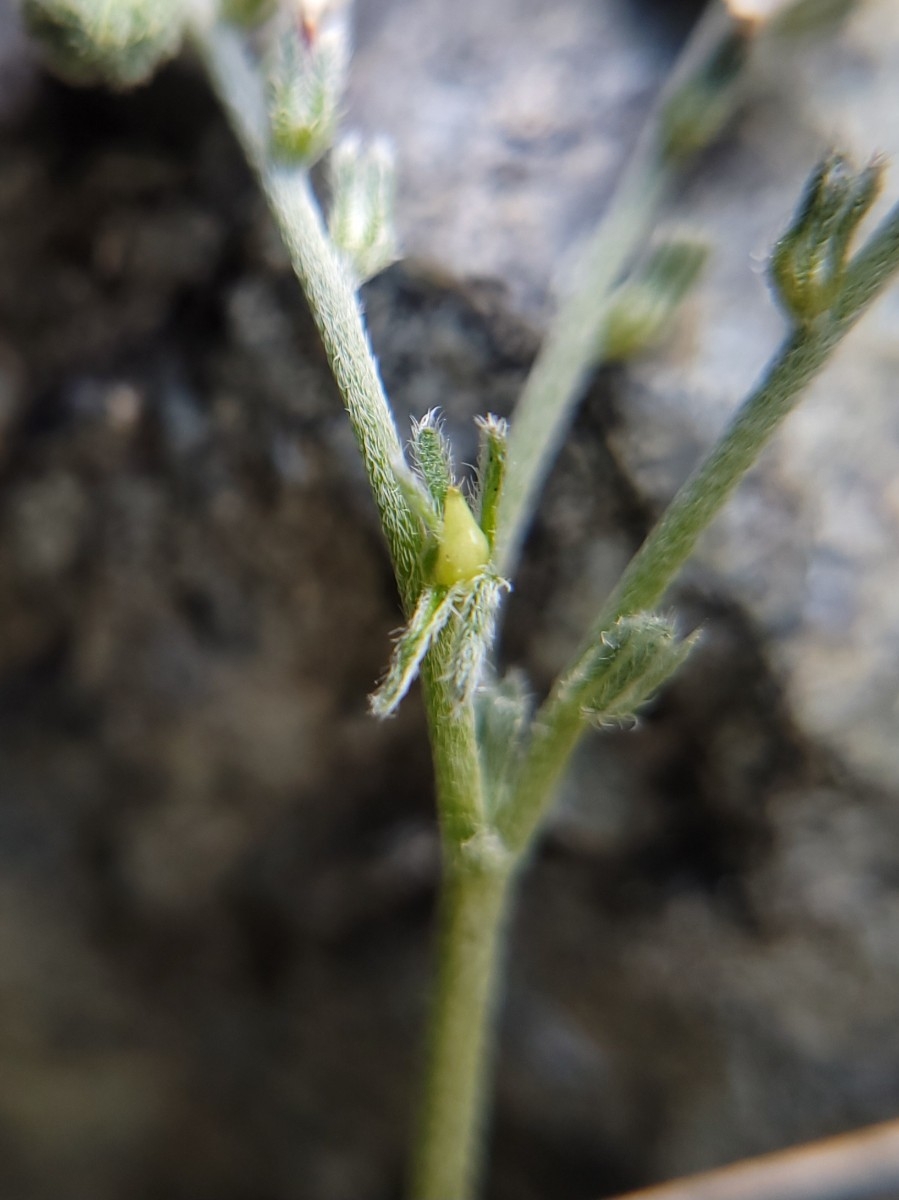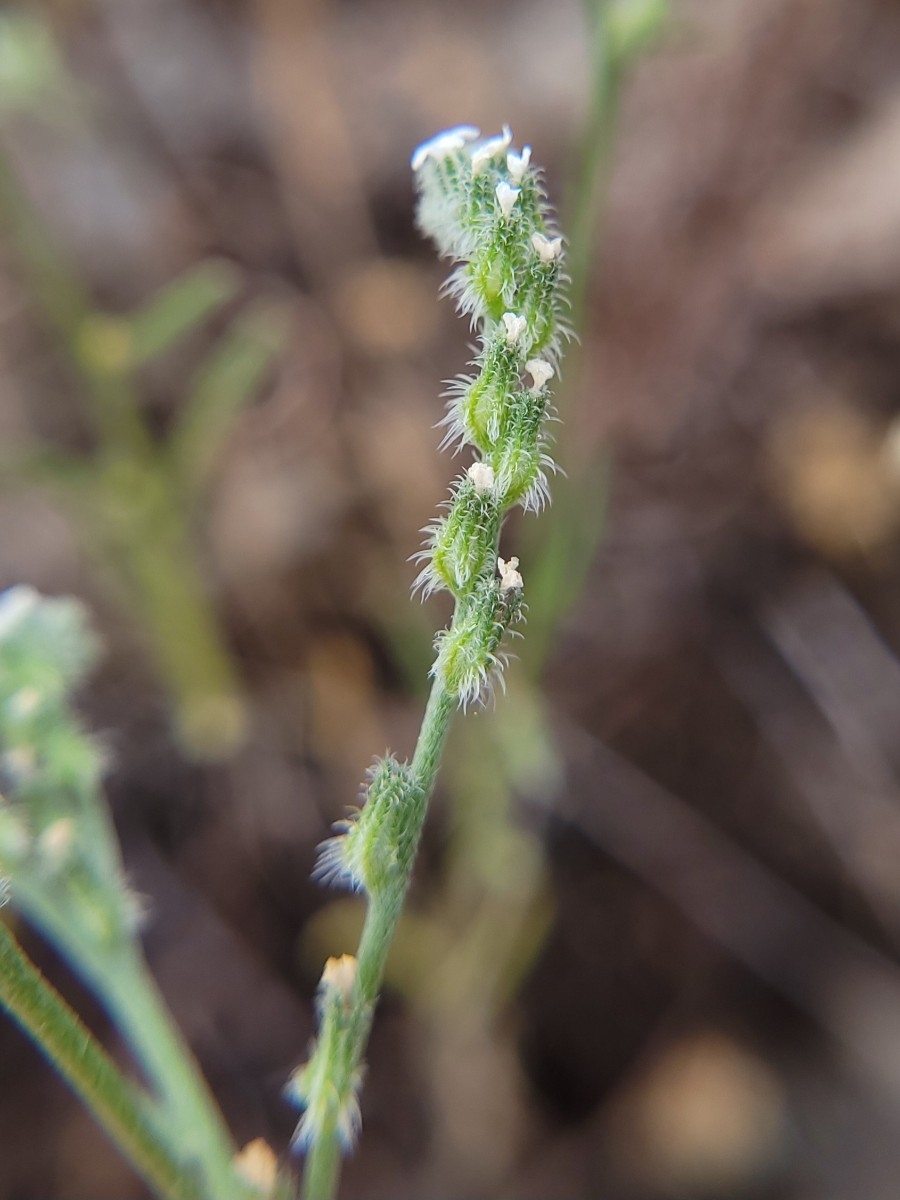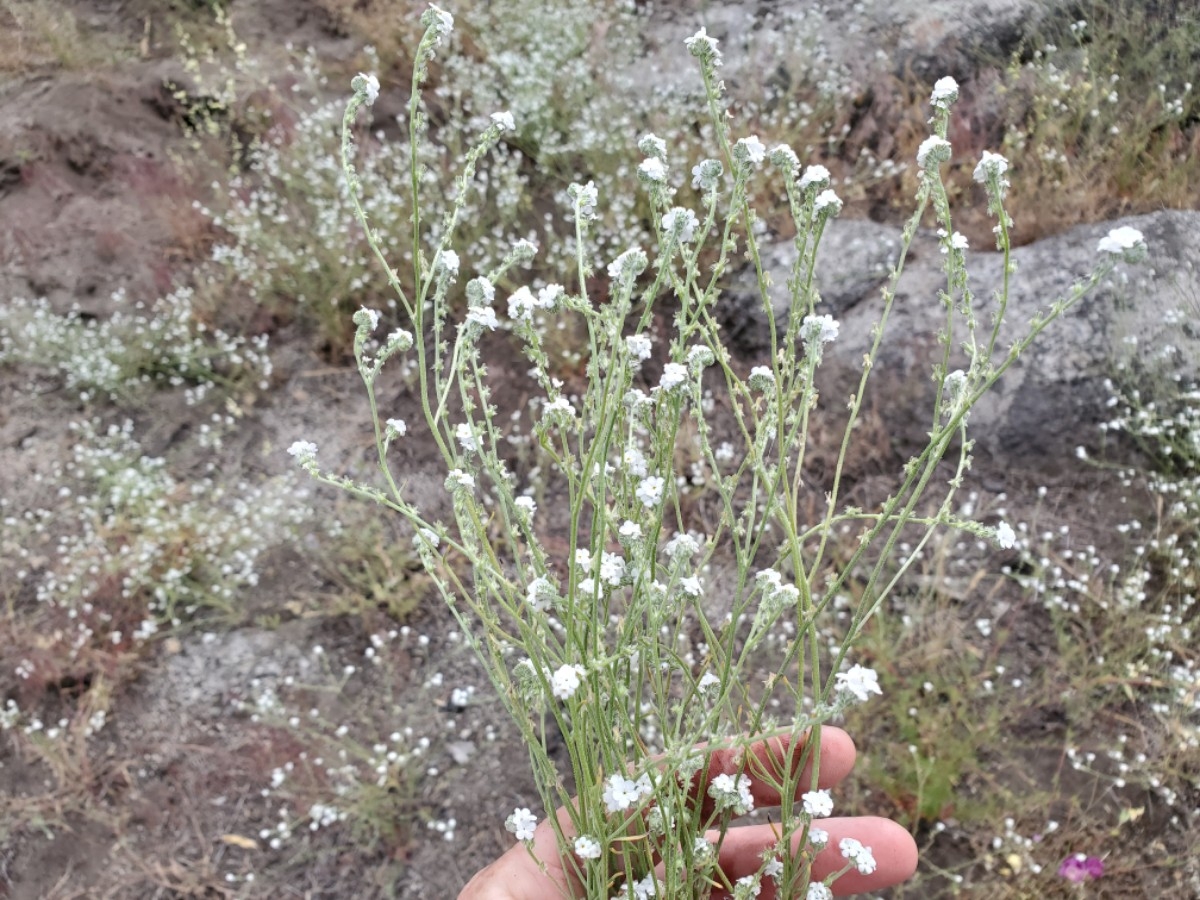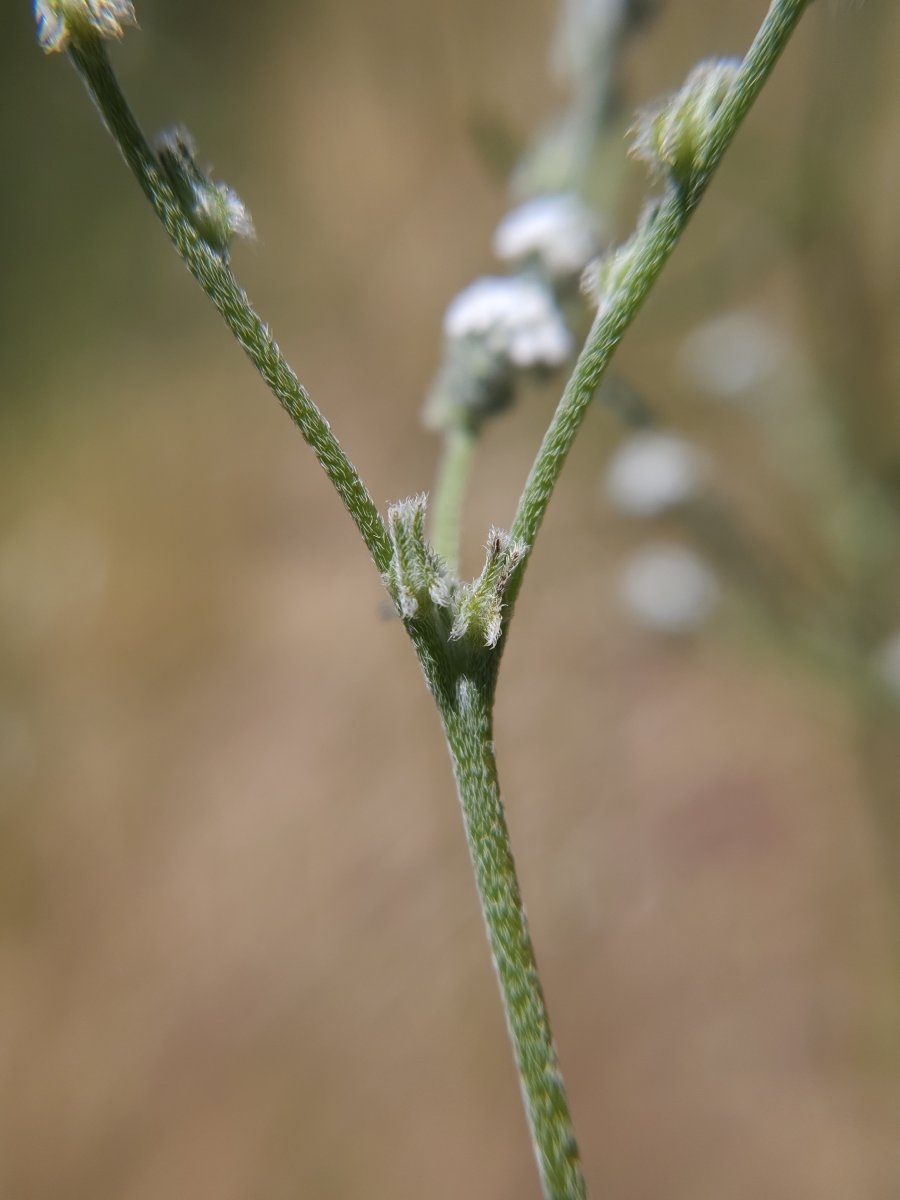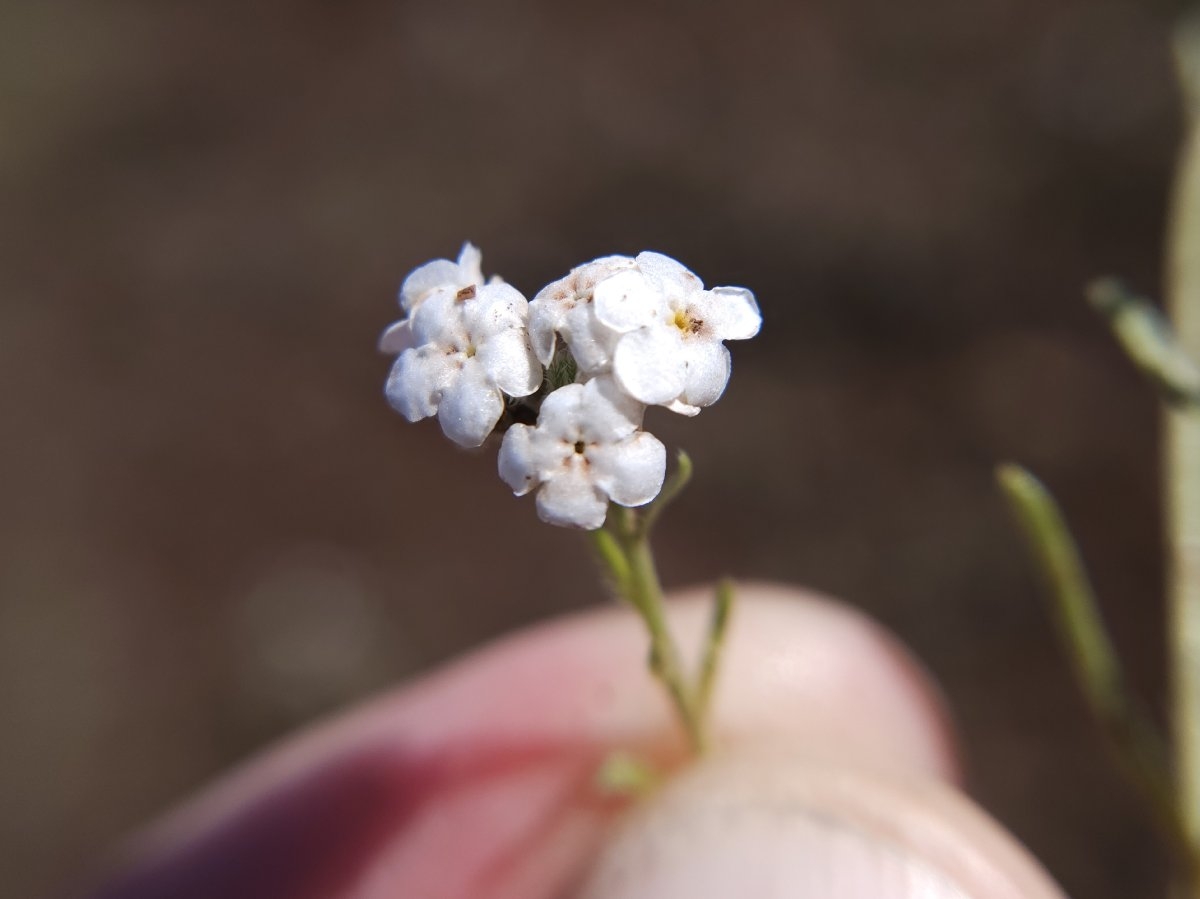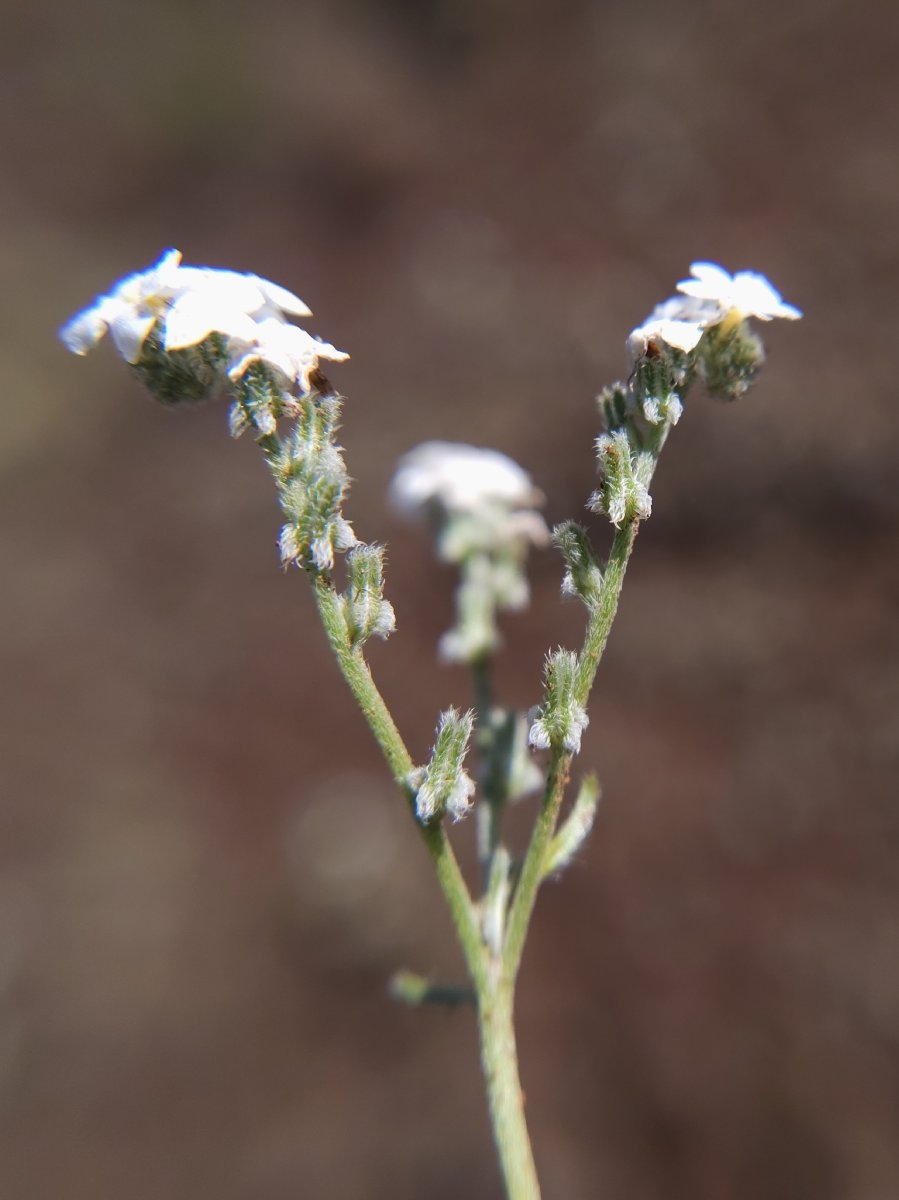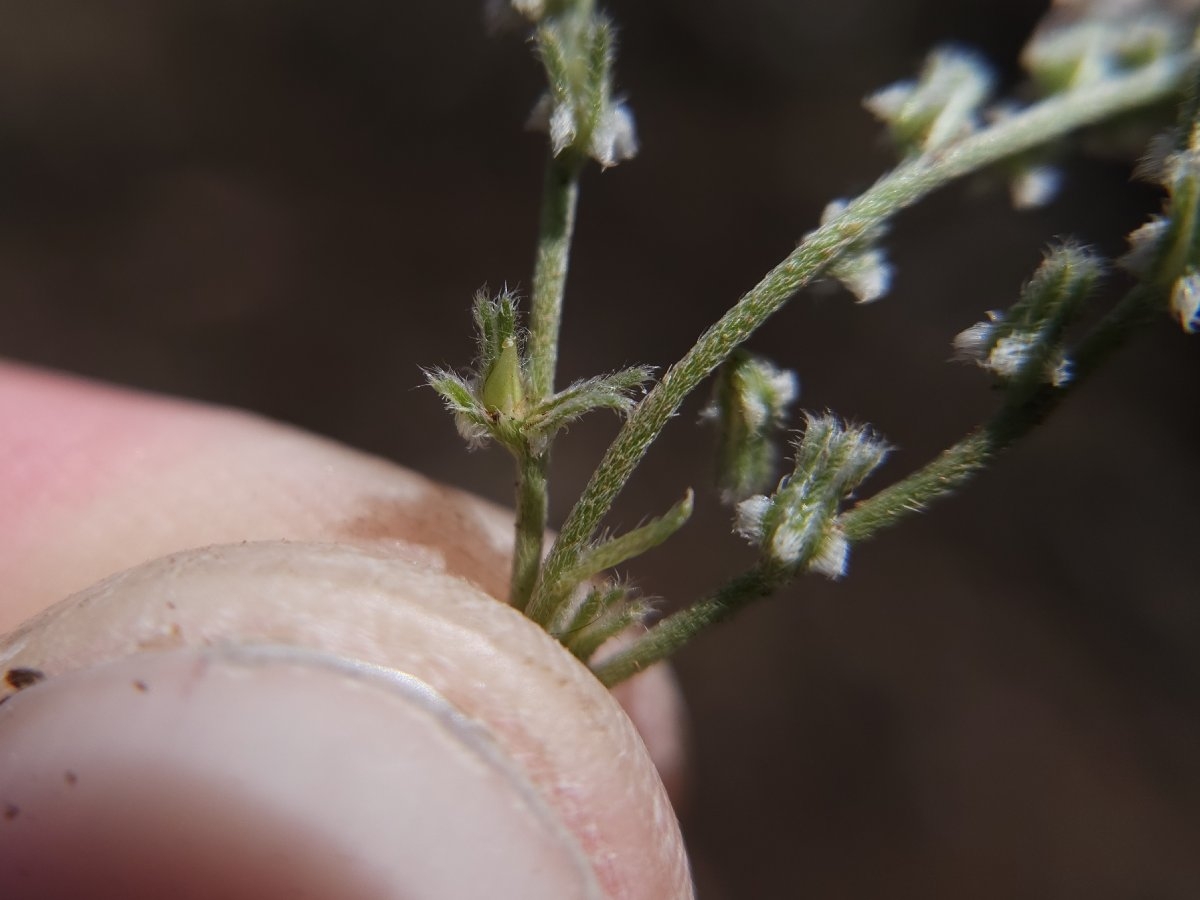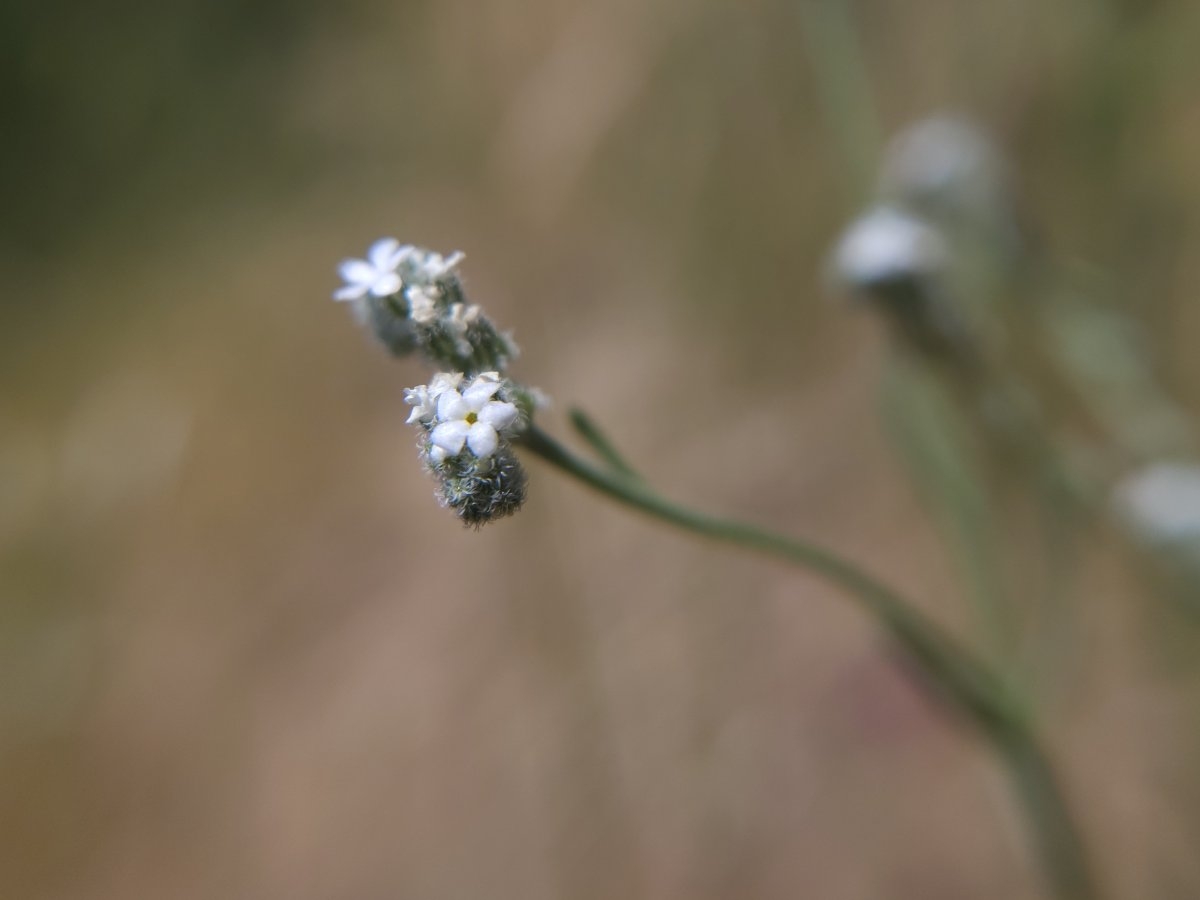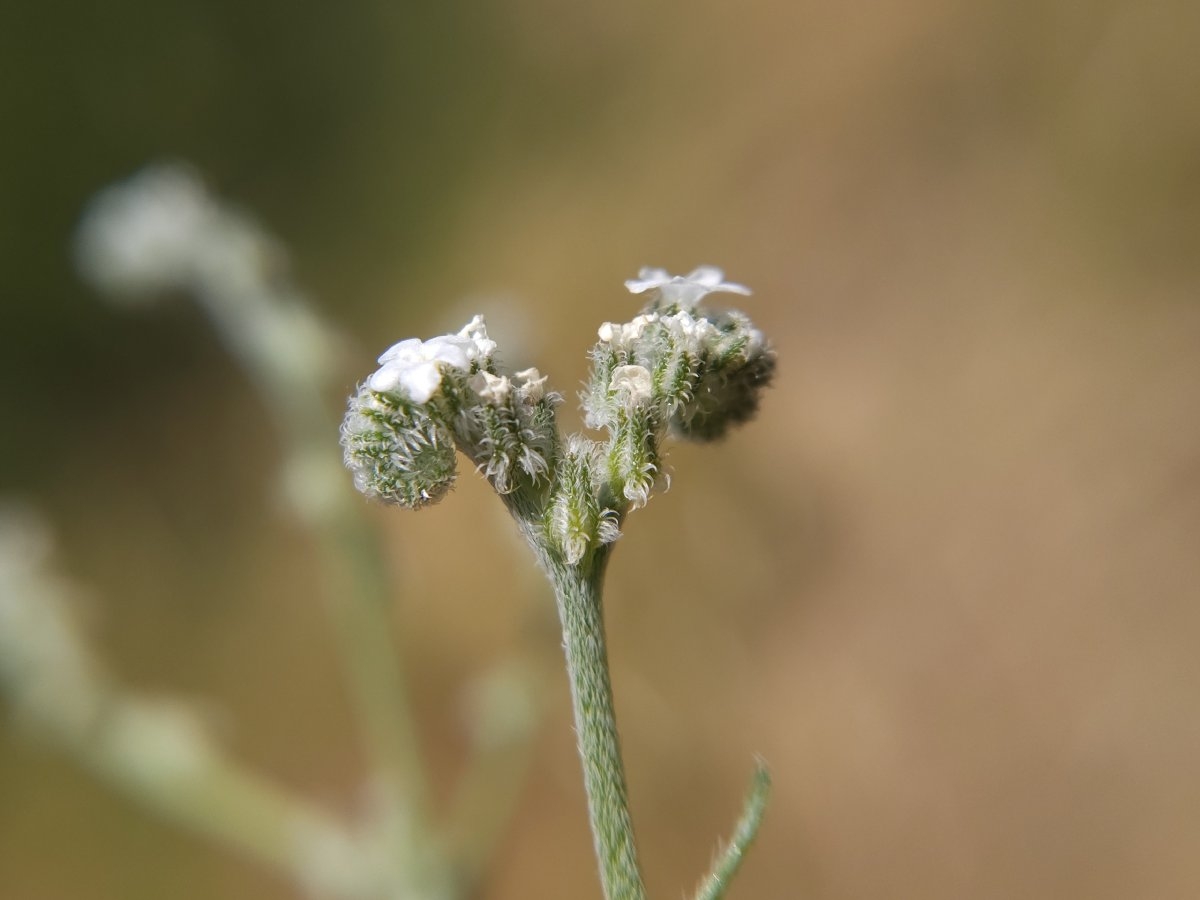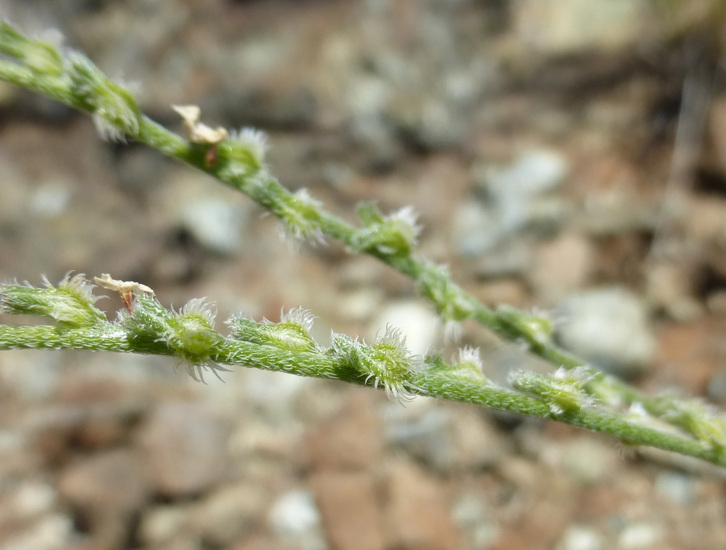[oregonflora.org] Description, Habitat: Plants 15 to 50 cm.
Stems erect, slender, wiry, branched distally to throughout, branches ascending, pallid-strigose.
Leaves only proximal-most pair occasionally opposite, linear, 20 to 60 × 1 to 2 (3) mm, tips acute-rounded, surfaces closely strigose to ascending-hirsutulous, inconspicuously pustulose.
Inflorescences cymules solitary or up to 5 in a group, (3)4 to 8(16) cm, much elongated in fruit, proximal-most flowers not touching; bracts absent; pedicels not elongated in fruit, < 0.5 mm.
Flowers usually unscented, strictly appressed; calyces persistent at maturity, asymmetric, narrowly ovoid to urceolate, constricted distally, 2 to 3 mm at anthesis, 3 to 4.5(5) mm in fruit, lobes separate to base, linear, separate to base, margins sparsely finely hirsute-ciliate, midribs thickened, tips usually spreading, abaxial surfaces densely covered with recurved, hook-tipped, pustulose hairs, especially along midrib, hairs longer away from inflorescence axis, adaxial surfaces glabrous basally, appressed short-hirsute apically; corollas rotate, tubes 1 to 2 mm, limbs (1)2 to 4(6) mm in diameter; fornices yellow; styles < 50% length of mature nutlets; flower bracts absent.
Fruits 1, positioned away from inflorescence axis, lance-ovate, not compressed, symmetric, 1.8 to 2.8 mm, brown to mottled, proximal half globose-swollen, bases narrowly truncate, somewhat pointed, margins rounded, tips long-acuminate, surfaces smooth, shiny, abaxial and adaxial surfaces strongly convex, spinal ridges absent; attachment scars centered, edges usually raised, abutted to overlapped entire length, rarely forming tiny areole at base.
Sandy, rocky, occasionally serpentine derived soils; slopes or flats of shrub, grasslands, or open woodland communities. Flowering Apr to Jul. 0 to 1200 m. BW, Col, CR, ECas, Lava, Sisk, WV. CA, ID, NV, WA. Native.
Cryptantha flaccida is distinguished by having recurved calyx hairs and a single, smooth nutlet with a swollen base and long-acuminate tips. It is similar to C. rostellata (see discussion). (link added by Mary Ann Machi)












